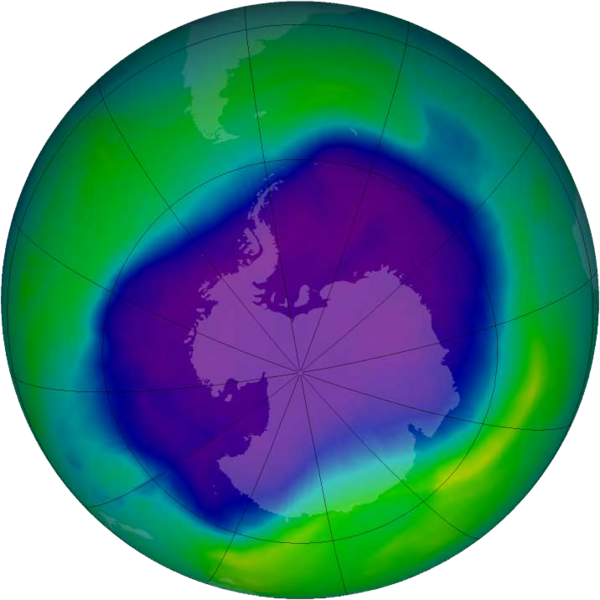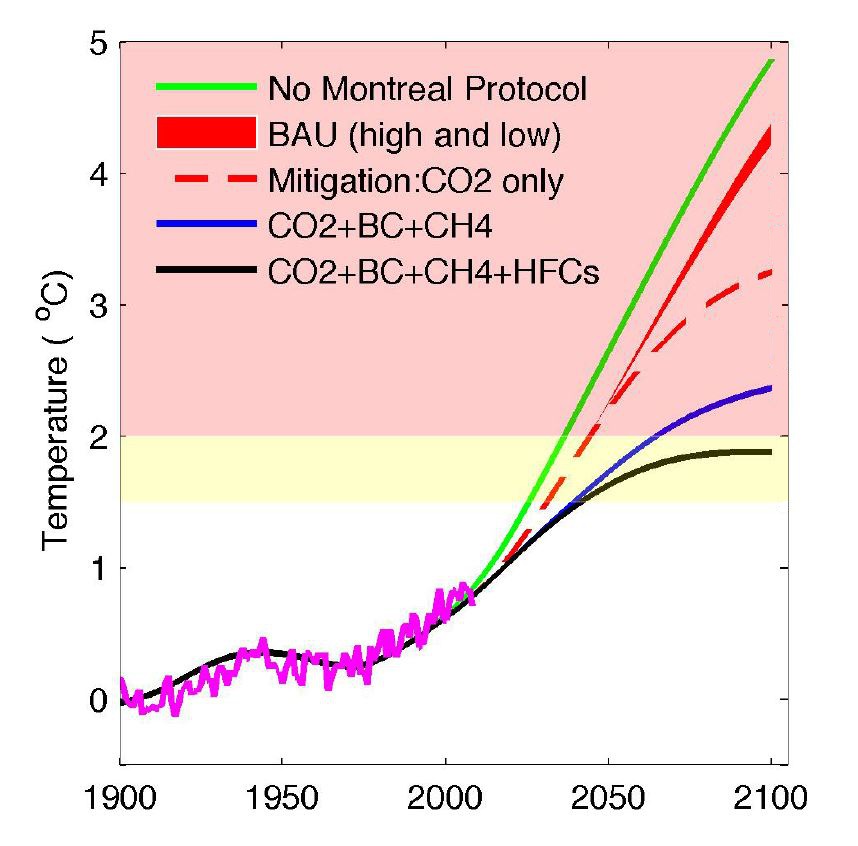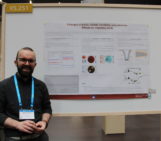Carbon dioxide is without a doubt the most famous of warming culprits. But would reducing emissions of this greenhouse gas be enough to mitigate climate change within this century? A recent paper published in Atmospheric Chemistry and Physics focuses on a less known substance that, if phased out, could avoid as much as 0.5 °C of warming by 2100.
Hydroflurocarbons (HFCs) have an interesting history. Now used widely as refrigerants, propellants, in fire extinguishers and air conditioning, among others, these man-made chemicals became commercially available only some two decades ago. With the adoption of the Montreal Protocol in the late 80s, ozone-depleting substances such as chlorofluorocarbons (CFCs) and hydrochlorofluorocarbons (HCFCs) have been phased out and replaced by ozone-friendly chemicals such as HFCs. But while they don’t damage the ozone layer, HFCs – like their predecessors – have a very high global warming potential: 100-3000 times that of carbon dioxide.

Ozone hole over Antarctica in September 2006, the largest ever recorded. Even though the atmospheric concentrations of CFCs and HCFCs have been decreasing since around 1995 – being replaced by HFCs – their effects are still being felt given the relatively long lifetimes of these ozone-depleting substances. The ozone layer will eventually recover, but the increasing concentrations of HFCs in the atmosphere could exacerbate global warming. (Credit: NASA)
The atmospheric concentration of HFCs is, however, low, accounting for only about 2% of all greenhouse gases. But as nations continue to reduce the use of ozone-depleting substances and with sales of air conditioning and refrigeration equipment booming, particularly in warm, developing countries, the use of HFCs is set to surge. “HFCs are the fastest growing greenhouse gases in the US, where emissions grew nearly 9% between 2009 and 2010 compared to 3.6% for CO2. Globally, HFC emissions are growing 10 to 15% per year and are expected to double by 2020,” the authors write in the new paper citing reports from the US Environmental Protection Agency and the World Meteorological Organization.
This potentially large increase in the use of HFCs motivated the researchers from the US and the Netherlands to find out what role HFCs play in mitigating 21st century climate change. Their aim was to determine how much warming could be avoided by replacing HFCs with readily available substitutes with a lower global warming potential (such as HFOs: hydrofluoro-olefins).
“Our calculations show that controlling HFC growth can avoid a significant amount of warming in this century, at least comparable to CO2 mitigation at 2050, and almost 50 % of CO2 mitigation by 2100,” said lead-author Yangyang Xu of the Scripps Institution of Oceanography in a press release.
Using an integrated carbon and radiant energy balance model, the researchers calculated the change in HFC radiative forcing from 2005 to 2100 under various emission scenarios. They also determined the corresponding temperature changes assuming a climate sensitivity of 0.8 °C/(Wm-2).

Model simulated temperature change under various mitigation scenarios that include CO2 and short-lived climate pollutants (BC: black carbon, CH4: methane, HFCs). The business-as-usual case (BAU, red solid line with spread) considers both high and low estimates of future HFC growths. The red-dash and black lines show the cases of CO2 mitigation and full mitigation, respectively, assuming a climate sensitivity of 0.8 °C/(Wm-2). (Image and caption adapted from Xu et al. 2013)
Their results (above) show that if only CO2 emissions are curbed, the expected warming by the end of this century is about 3.3 °C. Adding a reduction in black carbon and methane emissions, as well as HFC mitigation, lowers this value by about 1.5 °C. HFC replacement alone accounts for a drop of 0.5 °C, showing that only full mitigation can keep the 2100 temperature below 2 °C.
The study confirms the importance both the US and China are placing on cutting HFCs in their climate plans. The two countries recently agreed on phasing out production and consumption of these gases and replacing them by HFOs.
“The findings of our study provide even greater justification for phasing-down HFCs under the Montreal Protocol. It’s the biggest, fastest and cheapest climate mitigation available to the world today,” said co-author Durwood Zaelke of the Institute for Governance & Sustainable Development in a press release.
While the paper emphasises how significant HFC mitigation is, the authors point out that this should not be seen as an alternative to reducing CO2 emissions. HFCs, black carbon and methane are short-lived climate pollutants that remain in the atmosphere for up to a few decades only; CO2, on the other hand, can remain in the atmosphere for centuries to millennia. Therefore, the authors conclude, “[f]or the longer-term (century and beyond), mitigation of CO2 would be essential for a significant reduction in the warming.”
By Bárbara Ferreira, EGU Media and Communications Manager
Reference:
Xu, Y., Zaelke, D., Velders, G. J. M., and Ramanathan, V.: The role of HFCs in mitigating 21st century climate change, Atmos. Chem. Phys., 13, 6083–6089, 2013




